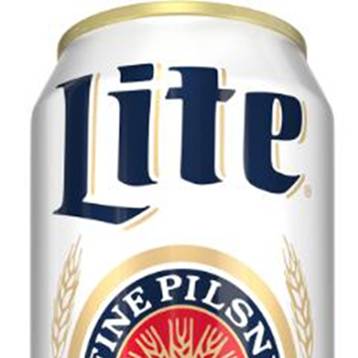
In order to transform nursing education, one of the Essential Shifts of Integration advocated by Patricia Benner and her coauthors in “Educating Nurses: A Call for Radical Transformation” was the need to “Emphasize clinical reasoning throughout nursing education.”(1)
If clinical reasoning needs to be EMPHASIZED, then it should be obvious that something else must be DE-EMPHASIZED. From my vantage point as a nurse current in clinical practice, NANDA would be an obvious first choice that must be scrutinized to determine its current relevance as a taxonomy to guide students in making clinical judgments and care planning priority setting.
Today’s blog is an excerpt from my new book “Teaching to Transform: Practical Startegies for Class & Clinical” coming later this fall. It will be filled with practical strategies & tools to bring needed change!
As I present at workshops, there is polarization with no middle ground when NANDA is discussed. Most faculty are willing to shoot the sacred cow or bring it down at the knees, but a minority are passionate to hold on to NANDA as the language of our profession and continue its current usage in nursing education to establish care priorities.
I want to propose that there is a middle ground on this hot topic that should be considered to bring needed change to nursing education. I call it NANDA “lite.”
NANDA in Their Own Words
Though NANDA was in its infancy when I graduated from nursing school (1983), it has no plans of going away quietly. Since 2004, NANDA has gone GLOBAL with its current acronym now NANDA-I (International).
NANDA-I advocates the following equation for nursing…NANDA-I nursing diagnostic statement=nurses clinical judgment According to their website, “Nursing diagnoses communicate the professional judgments that nurses make every day to our patients …NANDA exists to develop, refine and promote terminology that accurately reflects nurses’ CLINICAL JUDGMENTS.” (emphasis mine) http://www.nanda.org/about-nanda-international.html
But I have a very simple question to ask; as a practicing nurse did NANDA terminology capture how you thought and made clinical judgments? From my vantage point in acute care, it consistently did NOT.
NANDA “Lite”
I have nothing personal against NANDA. I believe that NANDA has some relevance to clinical practice, but clinical reasoning needs to be integrated within nursing process to develop the student’s ability to think like a nurse and readily translate knowledge to the bedside.
My objection to NANDA is the way it is currently emphasized in many programs as the ONLY or best way that students are allowed to establish a care priority.
This needs to change. For example, of the current 205 NANDA statements, I find only a handful that I consistently use in clinical practice, but I use them when they are relevant.
My short list of consistently relevant NANDA statements include:
- impaired gas exchange
- acute/chronic pain
- fluid volume excess/deficit
- impaired skin integrity
- risk for infection
- risk for falls
- risk for impaired skin integrity
Practical nurse thinking does not lend itself to a three-part NANDA nursing diagnostic statement with “related to” and “as evidenced by” that laid the foundation of care planning in nursing school.
These limitations of NANDA must be openly discussed and acknowledged to students. I have found that faculty are reluctant to even question these obvious limitations.
What I have found ironic, is that even novice student nurses correctly question the relevance of NANDA to bedside practice. Therefore, do not hesitate to share your perspective as an experienced clinical nurse who is now teaching students how you practically establish care priorities at the bedside with or without NANDA!
The Needed Balance
Learning to pass oral medications is a FUNDAMENTAL nursing skill. Once this basic foundation is built and practiced, the ADVANCED skill of parenteral medications is built upon this basic foundation. In the same way, NANDA should be seen as a foundational “FUNDAMENTAL” level of nurse thinking that is most relevant for STABLE patients with EXPECTED outcomes.
But because many NANDA statements are incapable of identifying the care priority when the status of the patient changes contributing to failure to rescue,(2) CLINICAL REASONING must be situated as an ADVANCED level of nurse thinking that must be emphasized at the second level of nursing education while NANDA can take a back seat.
Clinical Reasoning Defined
Educating Nurses has the one sentence, gold standard definition of clinical reasoning that must be richly situated in nursing education:
Clinical reasoning is the ability of the nurse to THINK IN ACTION and REASON as a situation CHANGES over time by capturing and understanding the significance of clinical trajectories and grasping the essence of the current clinical situation (1).
Basic or fundamental level of clinical reasoning must include an emphasis that guides student’s to identify what clinical data is RELEVANT. This is imperative to “grasp the essence of the current clinical situation.”
Linda Caputi’s applied clinical reasoning exercises in the clinical setting emphasize this needed relevance. Patricia Benner’s novice to expert theory identified that novice or new nurses see ALL clinical data that is in the medical record or what is personally collected as RELEVANT (3).
This is why if you give new students 3 hours to prepare for clinical, they will take 3 hours because they are furiously writing everything down from the chart because they think everything is relevant!
One way to guide this search for relevance is by helping student’s to see what data from lab panels are most important based on why they are needing care. Though a basic metabolic panel has 10 labs, only the sodium, potassium, and creatine are consistently relevant to the nurse.
In addition to relevance, the clinical reasoning template I created that breaks down the essence of clinical reasoning in 12 sequential steps has been used successfully by educators across the country. This template is most appropriate for the advanced level. (See my past blog “The 1 Form You Must Have to Transform Your Class & Clinical“)
In Closing
From my perspective, one of the greatest weaknesses in nursing education is the current disconnect between what is taught in the program, and the realities of clinical practice.
This is also referred to as the “theory practice gap” and it is imperative to find practical solutions to bridge this existing gap.
The tension between NANDA and clinical reasoning is an example of this disconnect and practice gap. To strengthen the thinking of our students, it is my hope that clinical reasoning will be integrated in your program and a balanced NANDA “lite” approach to establishing nursing priorities will prevail!
Closing Comment:
How does your program use NANDA to establish care priorities? Is it NANDA “heavy” or NANDA”lite”? What version did you use as a practicing nurse?
Comment below and let the conversation begin
References
- Benner, P., Sutphen, M., Leonard, V., & Day, L. (2010). Educating nurses: A call for radical transformation. San Francisco, CA: Jossey-Bass.
- Del Bueno, D. (2005). A crisis in critical thinking, Nursing Education Perspectives, 26(5), 278-282.
- Benner, P. (1982). From novice to expert, American Journal of Nursing, 82(3), 402-407.
Keith Rischer – PhD, RN, CEN
As a nurse with over 35 years of experience who remained in practice as an educator, I’ve witnessed the gap between how nursing is taught and how it is practiced, and I decided to do something about it! Read more…
The Ultimate Solution to Develop Clinical Judgment Skills
KeithRN’s Think Like a Nurse Membership
Access exclusive active learning resources for faculty and students, including KeithRN Case Studies, making it your go-to resource.




Hi Keith,
Just coming across this now. I appreciate your perspective on this. It’s clear to me that your acute care background has greatly influenced your philosophy. Being a nurse and educator in an ambulatory setting, I have a (slightly) different perspective on NANDA. I think it’s important to remember that nursing is a very broad field with many applications across settings and patient relationships. NANDA themselves discuss the importance of nursing leaders identifying the “short-list” of diagnoses that are relevant to their particular setting/specialty.
I find that NANDA has more utility in the longer-term patient relationships that we cultivate in an ambulatory/community setting than in an acute care setting. I think what you may be on to here is that there may be more than one type of clinical reasoning occurring in practice. NANDA only addresses one type. To your point though, I think that pre-licensure education must address both long term thinking and rapid, responsive clinical reasoning skills. Great work, keep it up!
Thanks for sharing Jared and appreciate your insights on this hot topic! I agree completely that NANDA taxonomy is much better suited for stable patients with expected outcomes in your context of ambulatory care. Glad you found these insights helpful!